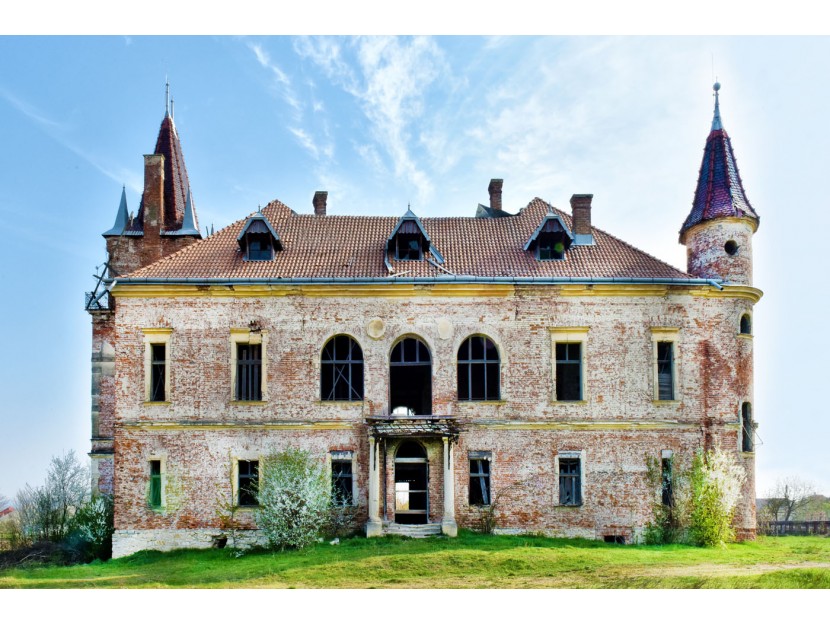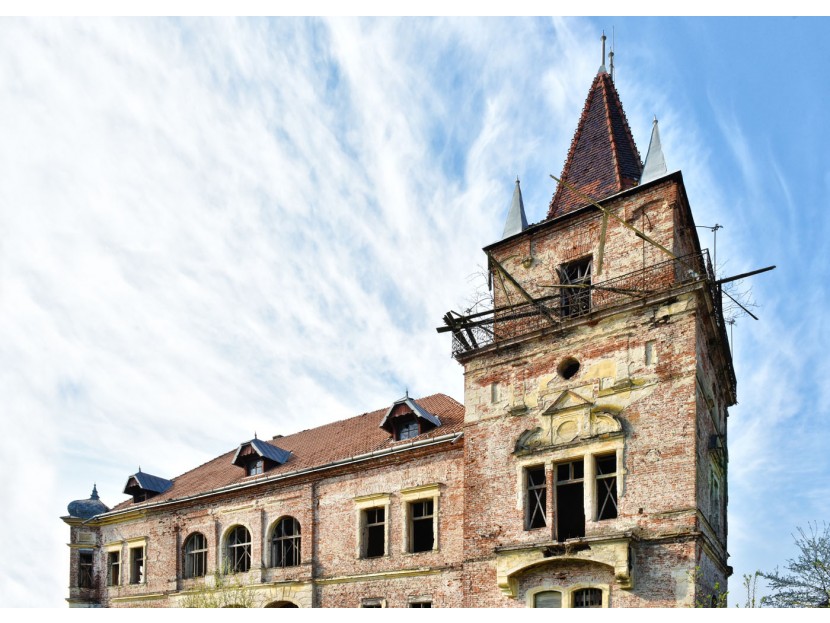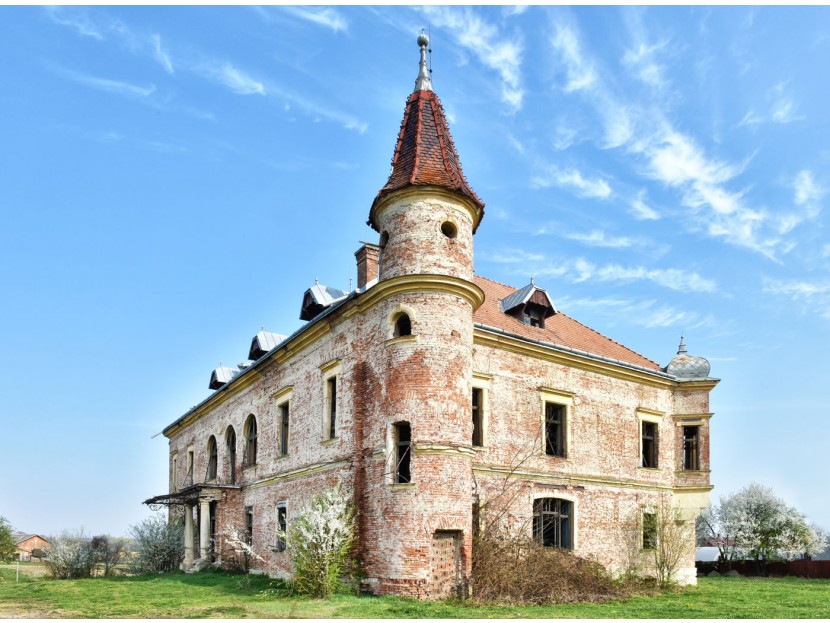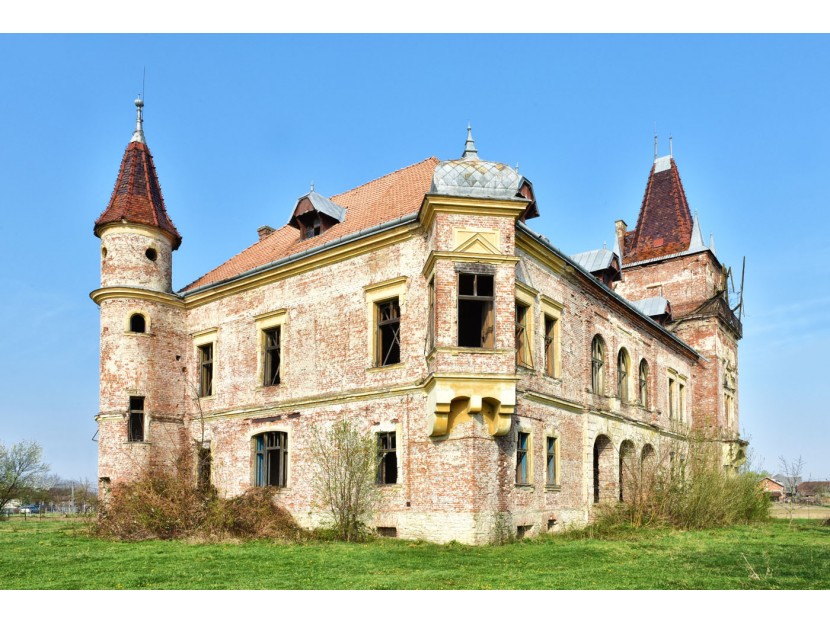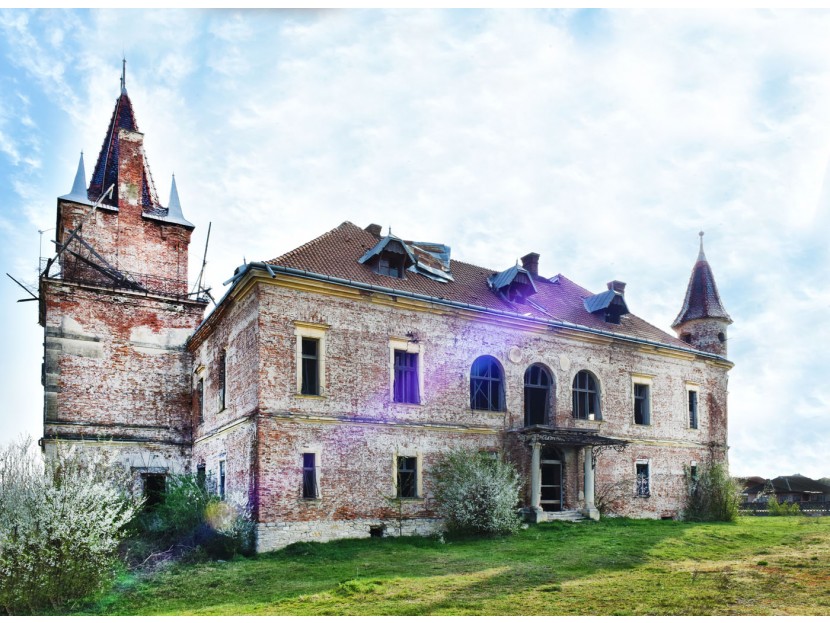€275k Pribilesti, ROMANIA. Historic Castle for Sale
Teleki Castle For Sale with ArtMark Historical Estates
The Teleki Castle in Pribilești bears an impressive historical value, defining a significant part of the Hungarian history. Used as summer residence by count Géza Teleki (1843-1913) and his son, Pál Teleki (1879 –1941), Count de Szék, a controversial figure, prime minister of Hungaria between July 1920-April 1921 and February 1939-April 1941. Many Hungarian personalities visited the castle during the summers, enjoying ball nights, when the huge piano hall at the first floor became the main attraction. The architecture of the building is associated with the emblematic architect Miklós Ybl, one of the greatest masters of Hungarian architecture, yet no certain proof survived.
The Teleki family residence was built at the end of the 18th century and was surrounded by an over 16 hectares park. In 1897, the building was renovated in an Eclectic style and extended with another floor by Géza Teleki (1843-1913), writer and politician, Minister of the Interior for a short period. He was married to Irén Murati (1852-1941), daughter of a wealthy Greek merchant.
Their son, Pál Teleki, was a politician and expert in geography, member of the Hungarian Academy of Sciences. He tried to preserve Hungarian autonomy by avoiding Hungary's involvement in World War II. He is a controversial figure because he enacted far-reaching anti-Jewish laws. In 1938, he was Minister of Education and represented his country during the Second Vienna Award. In December, he negotiated a treaty of friendship with Yugoslavia, yet in April 1941 admiral Miklos Horthy allowed German troops to cross Hungarian territory – this will determine him to commit suicide the next day, a gesture to absolve himself from the betrayal.
The archive at the National Institute of Heritage shows that: “In this manor house were preserved the written works of the family members, the family papers and a renowned library. All these were destroyed during World War II.”
After being nationalized in 1949, the castle was used in various purposes: cinema hall, ballroom or agricultural storehouse. In the historic building’s documentation in 1962 the building is described as follows: “The manor house is placed next to the road, with a 20 metre withdrawal. Next to it there is another ground floor building. The manor house’s park has been destroyed, being used as agricultural terrain. The building has three levels. It is built of ashlars, with vaults. The ground floor has two entrances on opposite sides. The basement exists only under one wing and under the tower. There is another entrance to the tower. Over the main entrance there is a balcony and a glass canopy on the west side. The secondary entrance, from the east, is formed of three arcades, with an open porch, with entrances from three directions. At the main entrance there is a large hall where the stairs are found and the first floor is surrounded by a balcony. At the first floor, from the balcony one can enter a large room, with the ceiling supported by a concrete beam and two metallic posts. The other rooms have doors on the ground floor and on the first floor. The windows over the entrance have at the upper side a semicircle, the others are straight. There are two towers, one with a rectangular layout, the other circular, both having separate entrances, from the outside. The rectangular tower has metallic stairs, which climb for four levels. It has a balcony, at the last floor, on the eastern side. The tower has a pyramidal spire, with small corner towers. The circular tower communicates with a secondary stairway. It has a conical spire. The two entrances to the basement are next to the towers. At the first floor, on the southeast corner, there is a bay-window. A gable at roof structure level is placed over the secondary entrance.”
The same source lists the construction materials: foundation and basement of ashlar walls and vaults, load-bearing wall made of bricks, slab between the ground floor and first floor made of metallic beams with small brick vaults, slab over the first floor of wooden beams with plastered planks, the hallway floor of mosaic tiles, the rooms with oak floor. The roof structure made of fir, covered with shingles, the square tower covered with scale tiles, the other tower and the bay-window covered with tin. Over the main entrance there was a canopy over the main entrance made of metal and glass.
After the fall of communism, the domain was not claimed by the heirs, therefore became property of the Satulung commune in 2006. A year later, it was purchased by an English descendant of the Teleki family, who planned to recondition it yet did not manage to, so sold it.
The villagers in Pribilești still remember the Canadian oak forest that surrounded the castle and created a thick and frightening shadow. It is said that the Count, who was a hunter, kept stuffed animals in the underground, including African trophies: tigers, hippos, rhinos. Today, this monument full of legends is waiting for a project to restore its amazing history.
Sources: Mara Popescu, Două sute de ani de la naşterea arhitectului Miklós YBL in Transsylvania Nostra, anul VIII, nr. 4, 2014, http://epa.oszk.hu.
National Institute of Heritage – Pribilești Archive, Teleki Manor House
adevarul.ro
ipfs.io
epa.oszk.hu
monumenteistoricedinromania.blogspot.com
Photo: Gabriel Ghizdavu
CLICK HERE FOR AGENT'S LISTING

